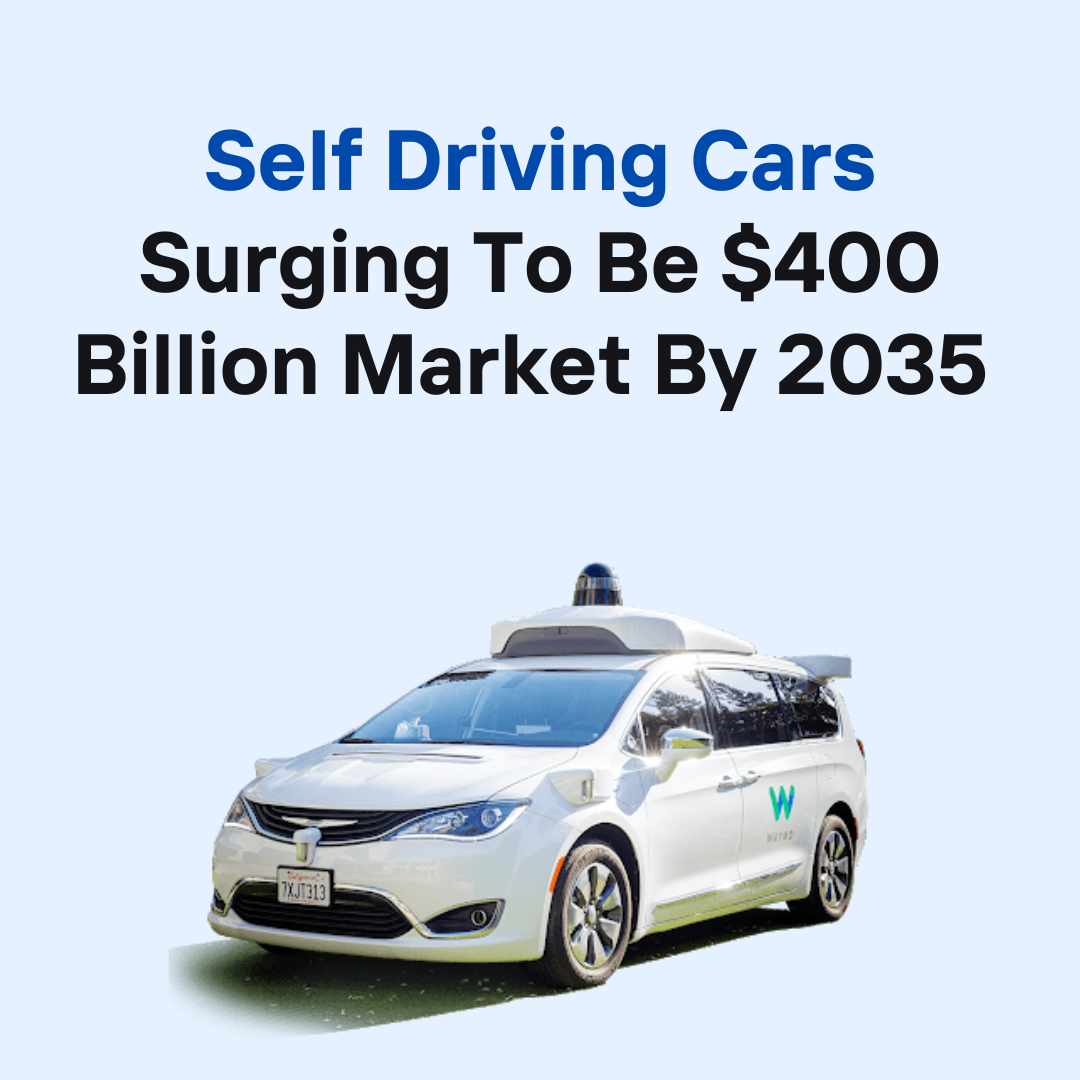Self Driving Cars – Surging To Be $400 Billion Market By 2035

Self Driving Cars – Surging To Be $400 Billion Market By 2035. The vision of witnessing fleets of autonomous vehicles efficiently transporting people to their desired locations has captivated the imagination of the public and generated billions of dollars in investments in recent years. Although there have been some setbacks that have caused delays in the launch of autonomous vehicles and hindered customer adoption, the mobility industry still widely believes that autonomous driving has the ability to revolutionize transportation, consumer habits, and society as a whole.
McKinsey’s research indicates that AD has the potential to generate a substantial amount of value for the auto industry, potentially reaching hundreds of billions of dollars by the end of the decade. However, in order to fully realize the benefits of autonomous driving for consumers and businesses, auto OEMs and suppliers may need to adopt new sales and business strategies, acquire new technological capabilities, and address safety concerns.

This report is specifically focused on the private-passenger-car segment of the AD market and aims to explore the potential disruption that autonomous technologies could have on the passenger car market. It also identifies critical success factors that every auto OEM, supplier, and tech provider should be aware of in order to succeed in the AD passenger car market. Other McKinsey publications delve into the potential of shared AVs like robo-taxis and robo-shuttles, as well as autonomous trucks and autonomous last-mile delivery.
Self Driving Cars (Autonomous driving) has the potential to transform the way people experience transportation
AD technology has the potential to improve driving safety, convenience, and enjoyment. Instead of spending hours driving, individuals could utilize their time for activities like video calls, entertainment, or work. Commuting with an autonomous vehicle may increase worker productivity, leading to shorter workdays. This increased mobility may encourage individuals to relocate to suburban or rural areas since they can perform their work duties from an AV. Additionally, elderly drivers may benefit from AD technology, which could expand their mobility options beyond public transportation or car-sharing services. Furthermore, AD technology may improve road safety, with research suggesting that the adoption of advanced driver-assistance systems (ADAS) in Europe could decrease accidents by approximately 15% by 2030.
AD has the potential to create more value for the auto industry, in addition to the benefits it offers to consumers. While most cars currently only have basic ADAS functions, advancements in AD capabilities are expected. In the future, vehicles could achieve SAE Level 4, meaning they can operate without a driver under certain conditions. Consumers are interested in having access to AD features and are willing to pay for them, as revealed by a recent McKinsey survey. The demand for AD systems is increasing and this could generate billions of dollars in revenue. Vehicles with L2+ lidar-based capabilities cost around $1,500 to $2,000 in component costs, while those with L3 and L4 options cost even more. According to McKinsey analysis, ADAS and AD could generate between $300 billion and $400 billion in the passenger car market by 2035, based on current market solutions and consumer interest.

The potential impact of Self Driving Cars (AD) on the passenger car market
McKinsey has formulated three autonomous-passenger car sales scenarios based on varying levels of technology availability, customer adoption, and regulatory support due to the high uncertainty in the auto industry. In the delayed scenario, automakers delay AV launch timelines, and consumer adoption remains low. According to this scenario, only 4 percent of new passenger cars sold in 2030 will have L3+ AD functions, which will increase to 17 percent in 2035. In the base scenario, OEMs meet their announced timelines for AV launches, with a medium level of customer adoption despite the high costs of AD systems. By 2030, 12 percent of new passenger cars will be equipped with L3+ autonomous technologies, and 37 percent will have advanced AD technologies in 2035. Finally, in the accelerated scenario, OEMs debut new AVs quickly with substantial revenue generation through new business models, and most premium automakers pre-install hardware that makes fully autonomous driving possible. In this scenario, 20 percent of passenger cars sold in 2030 include advanced AD technologies, and 57 percent will have them by 2035.
Providing greater levels of automation
Consumers have a strong interest in features related to autonomous driving (AD), according to a survey conducted by McKinsey in 2021. This interest is expected to result in higher demand for AD systems, which in turn could generate significant revenue for the automotive industry. For instance, vehicles with lidar-based Level 2+ (L2+) capabilities contain roughly $1,500 to $2,000 in component costs, and even more for cars with Level 3 (L3) and L4 options. Based on the analysis by McKinsey, ADAS and AD could potentially generate between $300 billion and $400 billion in the passenger car market by 2035.
AD systems may be more valuable to some consumers than others, depending on their lifestyles and needs. For example, a sales manager who drives long distances for work may find the time previously spent driving to be more productive if they upgrade to an autonomous car. However, a parent who mainly uses their car for running errands or taking their children to school may not see the same benefits. By understanding the different values of various consumer groups, automakers and dealerships can customize their pricing and offerings accordingly. One possible pricing model could include a combination of fixed fees, subscriptions, and pay-per-use options such as hourly rates for using a traffic jam pilot. Recent surveys show that consumers prefer having different pricing options, with 20 percent of respondents saying they prefer subscription services and nearly 30 percent preferring to pay each time they use a feature. Some respondents also expressed interest in unlocking additional ADAS features even after purchasing a new car. However, despite consumer interest in autonomous driving, recent surveys indicate a more cautious attitude towards self-driving cars. Consumers are less willing to consider driving a fully autonomous vehicle than they were five years ago, with only 26 percent of respondents saying they would prefer to switch to a fully autonomous car in 2021, compared to 35 percent in 2020.
Source: Mckinsey
Spotlight on Xiaomi EV to be introduced by H1 2024




